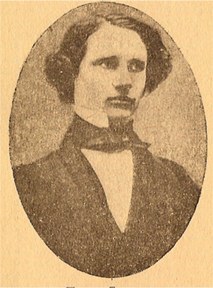Crisis in Physics
Texts by Dr. Antonio Moreno González
At the end of the nineteenth century, Lord Kelvin argued that the basic foundations of physics had been definitively laid". It was not long, however, before those solid foundations were to be rocked. There were essentially two phenomena which were to put physics in quarantine: blackbody radiation and the electrodynamics of moving bodies.
For physicians a black body is a perfect ideal absorbent, capable of swallowing up any electromagnetic radiation which reaches it, and for that reason it is also a perfect transmitter; a small hole in a completely sealed box at any temperature is an example of a black body. If we accept the explanation given by classical physical principles, based on the idea that the energy absorbed or issued corresponds to a process of wave (and therefore continuous) motion, this should lead to a situation known as the ultraviolet catastrophe , which--if it were existed--would mean that when we opened the kitchen oven, in which the radiant energy is constantly bouncing off the walls, we would suddenly be hit by a blast of deadly radiation. Fortunately, of course, this does not happen, in contravention of the principles of classical physics.
With regard to the electrodynamics of moving bodies, the facts also contradicted Newtonian explanations. Let us see how Einstein examined the problem in his celebrated article "On the Electrodynamics of Moving Bodies":
"Take, for example, the reciprocal electrodynamic action of a magnet and a conductor. [...] if the magnet is in motion and the conductor at rest, there arises in the neighbourhood of the magnet an electric field with a certain definite energy, producing a current at the places where parts of the conductor are situated. But if the magnet is stationary and the conductor in motion, no electric field arises in the neighbourhood of the magnet. In the conductor, however, we find an electromotive force, to which in itself there is no corresponding energy, but which gives rise--assuming equality of relative-motion in the two cases discussed--to electric currents of the same path and intensity as those produced by the electric forces in the former case". Einstein was surprised by this asymmetry in the description of two apparently reciprocal phenomena, the relative movement of conductors and magnets, with identical results, since the current produced in both cases is the same.
Moreover, if the transformations of coordinates in Maxwell's equations are applied to the relative movements between charges and magnets in accordance with Newtonian mechanics, the theoretical results do not match the phenomena observed. This unexpected electrodynamic behaviour of moving bodies opened further questions for physicists who in Gamow's words "were suffering the angst of metamorphosis from the classical larva to the modern butterfly".

A young William Thomson, Lord Kelvin (1842 - 1907)
